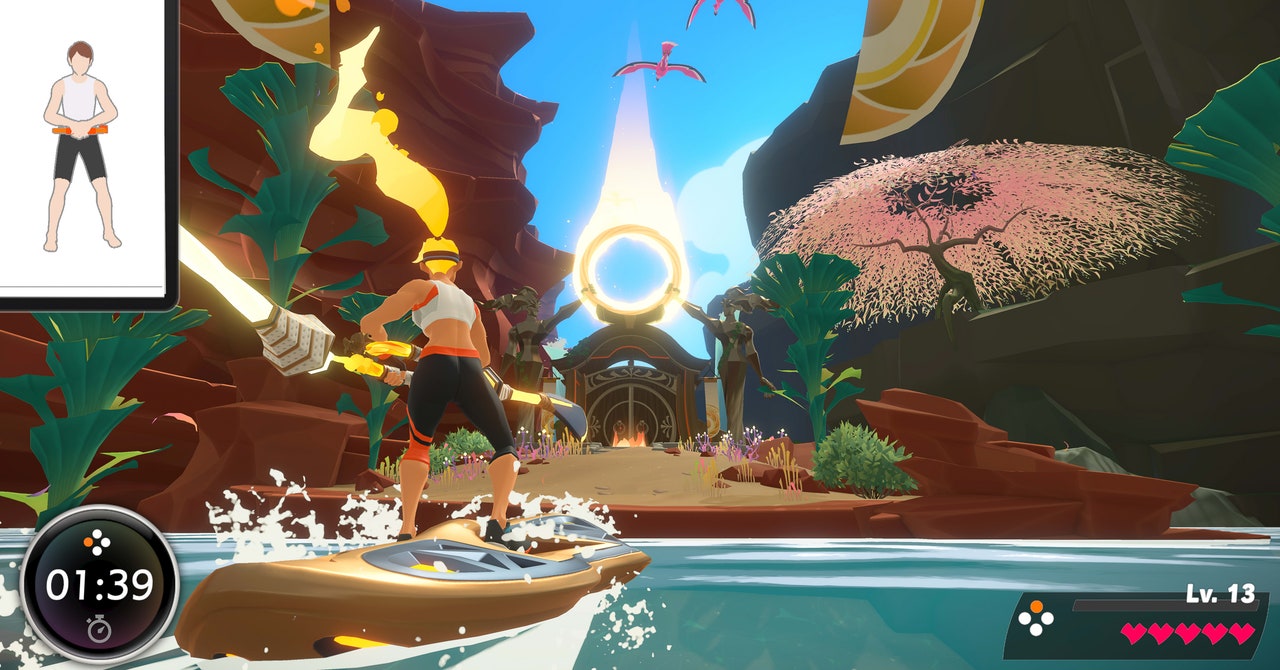The 1,462 days of January are finally behind us. Chances are, you’ve probably already canceled that gym membership you signed up for in the midst of a “new year, new me!” haze, and the thought of going for a run when—in much of the northern hemisphere, at least—it’s cold, gray, dark, and wet feels masochistic. If that’s you, you’re not alone, with some research showing around 20 percent of gym-goers starting in January quit within a month, and only a meager 22 percent are still going after a year. But what if you didn’t have to go to the gym at all? What if you could work off any festive excesses by playing video games instead?
If you just got excited at the thought of getting jacked while going goblin mode on the couch playing Mario Kart and inhaling nachos, the bad news is that that particular strategy isn’t going to work. Sorry. However, I’ve spent the past couple of months incorporating exercise-focused video games into my regular routine, and the results have been both promising and surprising.
First though, a disclaimer: I am not a qualified personal trainer or nutritionist, and as such you’ll have to look elsewhere for advice on specific exercises or diet. The following simply reflects my personal experience using these so-called “exergames,” and you should always seek out the advice of a professional before undertaking anything new. Got that? OK, let’s dive in.
Warming Up
Some background: Surprisingly, it turns out that writing about video games and technology isn’t the most active career. Adding to that, after Covid lockdowns, I never quite got back to what had only vaguely passed for regular exercise in the first place—an intermittently used gym membership and semi-regular swim sessions. Almost without realizing, I’d crept up to a weight of 105 kilograms (230 pounds). It wasn’t until Spring 2024 that I got the shock necessary to really do anything about it though, when some otherwise routine blood tests came back showing that my hemoglobin A1C count (aka HbA1c, the measure of average blood glucose levels for the previous three months) put me firmly in prediabetic territory.
My immediate reaction: “absolutely not.” Spurred back to the gym, I initially focused on cardio workouts before incorporating more weightlifting sessions. I built up to going three or four times per week, and alongside reapproaching my diet—cutting out snacks, drinking less alcohol, and tracking my daily calorie intake—I managed to shed about 17 kg (37 pounds) by early December 2024, bringing me down to 88 kg (194 pounds). Excellent progress toward an 85-kg (187-pound) target my doctor had advised, but I frustratingly found I’d hit a plateau. The same routine that had gotten me that far didn’t seem to be getting me any further.
This is where video games come back in. Years earlier, I’d picked up a copy of Ring Fit Adventure for Nintendo Switch. At the time, it was a curiosity purchase—I love a quirky gaming peripheral and thought its strange Pilates-style ring and JRPG-style turn-based combat would make for an interesting experience. Instead, it had remained boxed and untouched ever since. Now though, I was looking at it sitting on my shelves with a half-thought: “Well, if video games got me into this mess, can they help get me out?”
I decided I should test it out. For a month, I’d incorporate additional workouts with Ring Fit Adventure on the days I didn’t use the gym, leaving one day per week with no exercise to recuperate, all while sticking to my diet plan. After that month, I’d weigh in and report back on whether using exergames could really push me off that plateau. Much of this test period took place in December and through the holidays, so spoiler: Neither point quite went to plan—but I still came away with some positive results.




